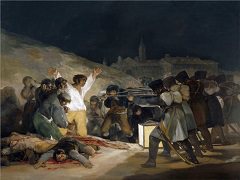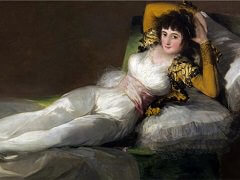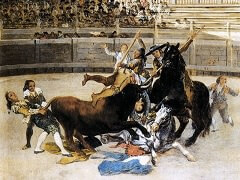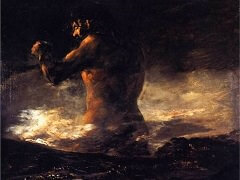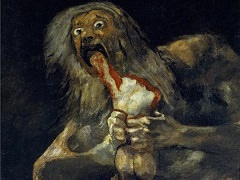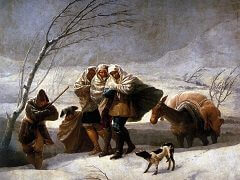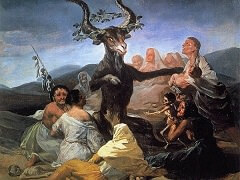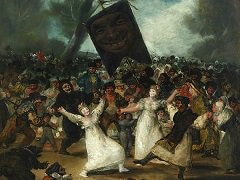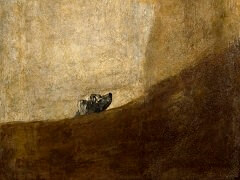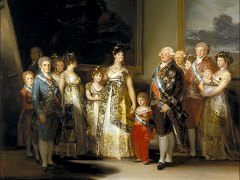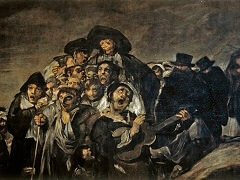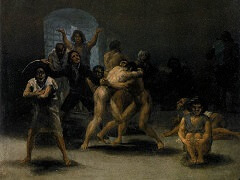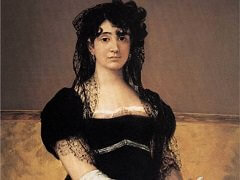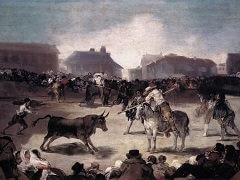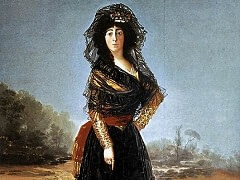The Second of May 1808, by Francisco Goya
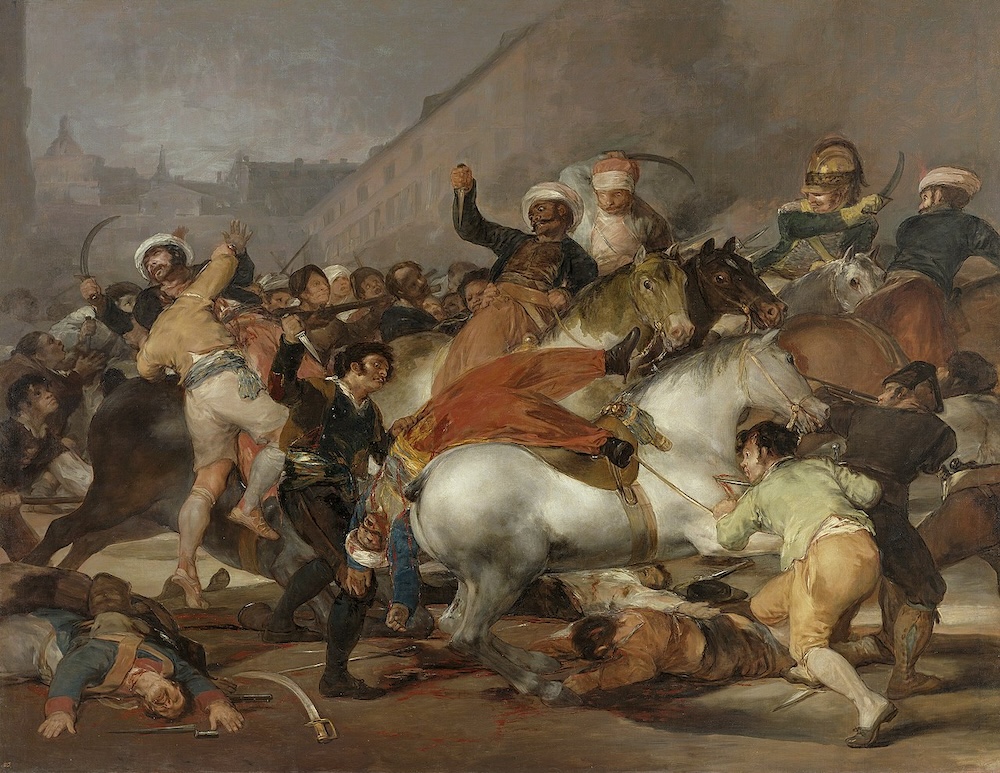
The scene is a street battle which took place between Napoleon's squadron of Mamelukes and Spaniards during the riots in Madrid in 1808. Painted in pastel blues, pinks and browns with touches of crimson, it contrasts with its darker companion piece.
Perhaps hoping for a share of the money subscribed in large amounts for the creation of commemorative works of art, Goya produced both pictures in a year of public mourning for victims of these riots. He petitioned the government for financial aid in painting two pictures of 'our glorious insurrection against the tyrant of Europe'. He received a monthly allowance of 1500 reales plus the cost of materials, but his paintings aroused little interest, perhaps because his style was so different from the predominantly Neo-Classical designs of his contemporaries. It is highly unlikely that Goya saw any of the eighty-six Mamelukes in Madrid in 1808, and the Mamelukes in the picture have been transformed into Moors. The attitudes of the rebels seem highly reminiscent of the bullring: they posture like matadors, and the horses, particularly about the hindquarters, are bull-like. The entanglement of horses and bodies represents a transference of Goya's absorption in the interplay of speed, heavy animal-power and convergence of acute angles of movement,

